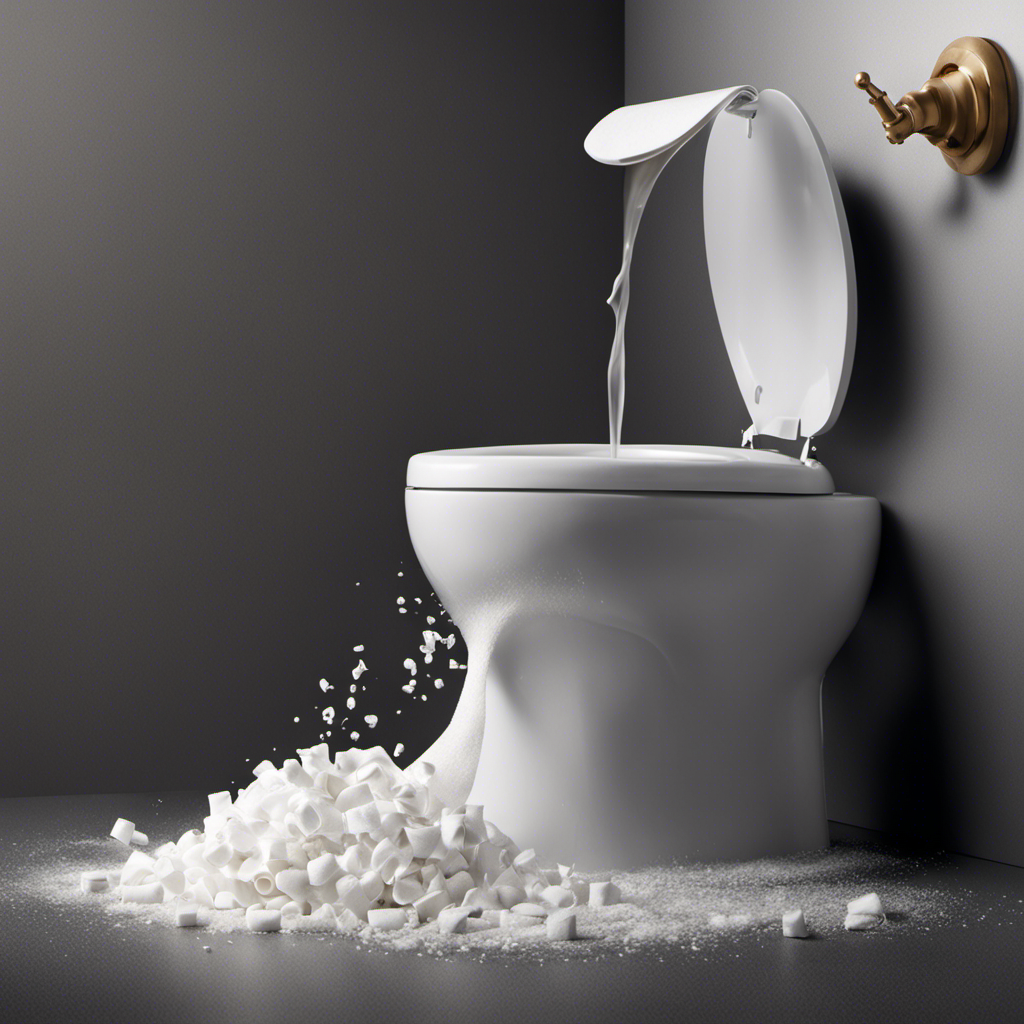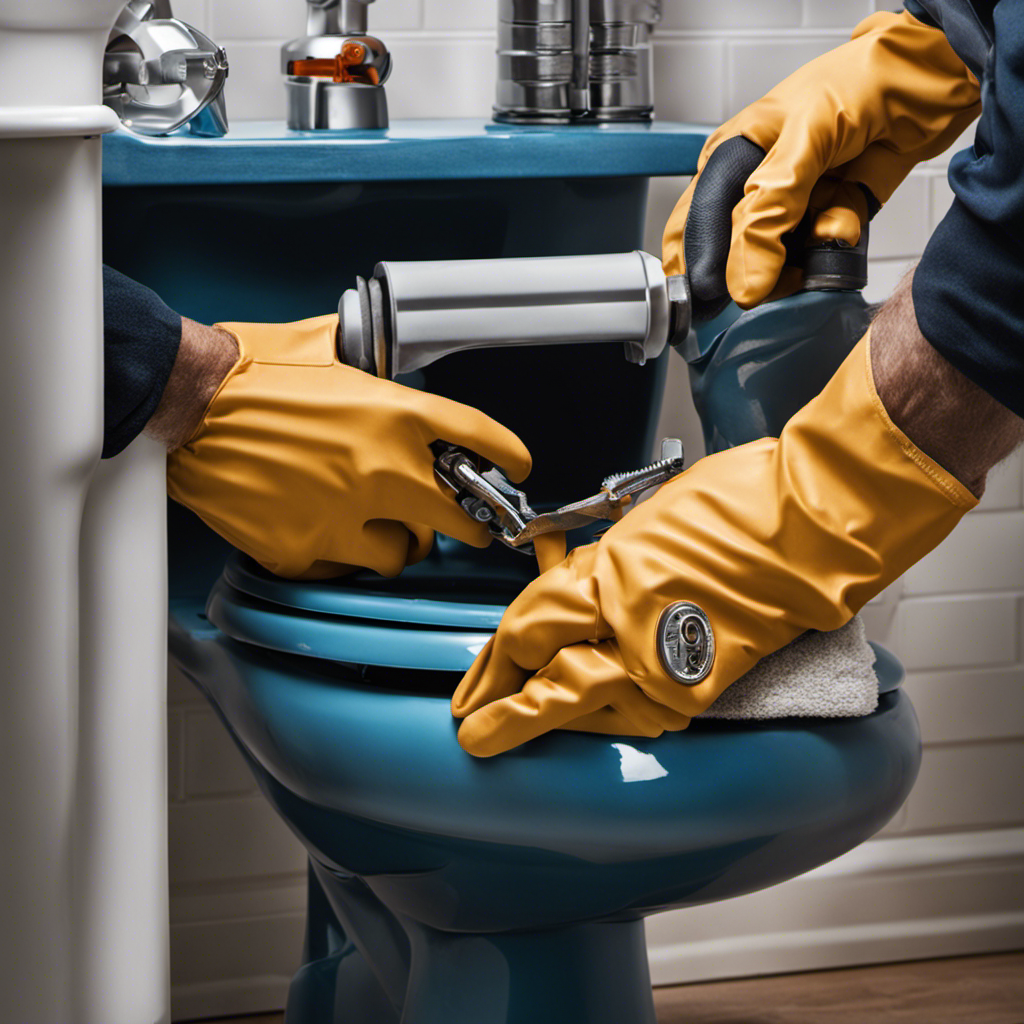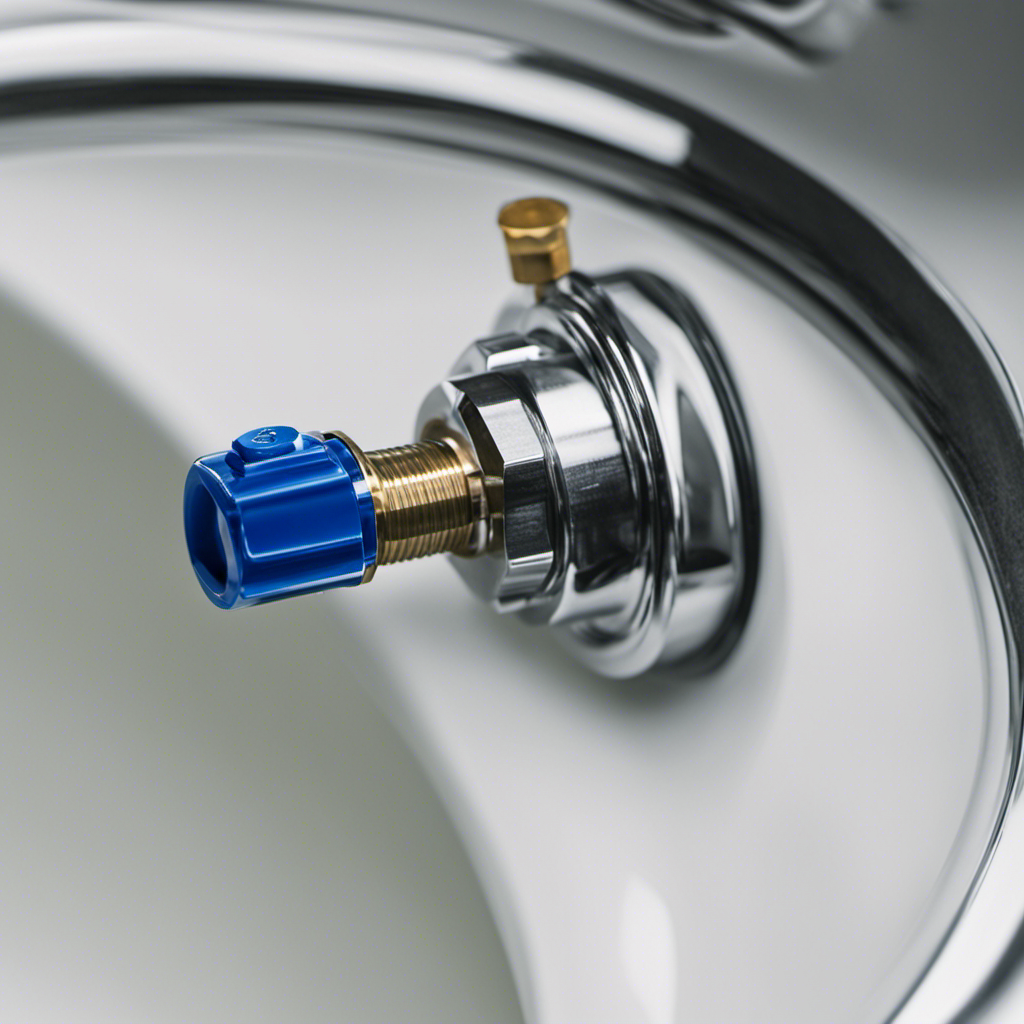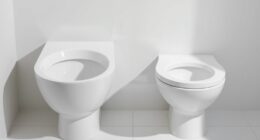I’ve got a solution for your toilet paper clog. In this article, I’ll show you how to dissolve it using the right techniques and products.
We’ll start by understanding the nature of these clogs and assessing their severity.
Then, I’ll guide you through choosing the perfect dissolving agent and applying it effectively.
Lastly, I’ll share some tips to prevent future clogs.
Get ready to tackle this issue head-on and keep your plumbing running smoothly.
Key Takeaways
- Excessive use of toilet paper can lead to clogs
- Identifying the severity of the clog helps determine the necessary action to dissolve it
- Choosing the right dissolving agent requires considering effectiveness, safety precautions, and time required
- Proper disposal of non-flushable items and considering alternatives like flushable wipes or bidets can prevent future toilet paper clogs.
Understanding Toilet Paper Clogs
To understand why toilet paper clogs happen, you need to know how toilet paper breaks down in water. When toilet paper is flushed, it enters the sewer system and comes into contact with water. Toilet paper is designed to break down easily in water, but certain factors can impede this process, leading to clogs.
One of the common causes of toilet paper clogs is using excessive amounts of toilet paper in one flush. This overwhelms the water and prevents proper dissolution of the paper. Additionally, low water pressure or a weak flush can also contribute to clogs.
Troubleshooting techniques for toilet paper clogs include using a plunger to dislodge the blockage or using a toilet auger to remove stubborn clogs.
Identifying the Severity of the Clog
Determining the seriousness of the blockage can be done by observing the water level in the toilet bowl. By evaluating the clog severity, you can determine the appropriate steps to take in order to dissolve the toilet paper clog effectively. Signs of a serious clog include a high water level that rises quickly after flushing, water overflowing from the toilet bowl, and gurgling sounds coming from the pipes. To help you visualize the severity of a clog, take a look at the table below:
| Water Level | Severity Level | Action Required |
|---|---|---|
| Low | Mild | Basic unclogging |
| Medium | Moderate | Plunger or auger |
| High | Severe | Call a plumber |
Observing the water level and referring to this table will give you a good indication of the severity of the clog and the necessary steps to take in order to dissolve it.
Choosing the Right Dissolving Agent
Choosing the right agent can be crucial in effectively eliminating the blockage in your toilet. When it comes to dissolving agents, there are a few options available.
Two common choices are chemical-based solutions and enzymatic cleaners. Chemical-based solutions like sulfuric acid or caustic soda are powerful at breaking down toilet paper clogs, but they come with their share of safety precautions. It’s important to wear protective gloves and goggles, and to avoid inhaling the fumes.
Enzymatic cleaners, on the other hand, use natural enzymes to break down the toilet paper. They are generally safer to use and don’t require as many safety precautions. However, they may take longer to fully dissolve the clog.
When comparing different dissolving agents, consider their effectiveness, safety precautions, and the time they take to work.
Applying the Dissolving Agent to the Clog
When applying the dissolving agent, it’s important to follow the instructions carefully to ensure proper elimination of the blockage. To effectively remove toilet paper clogs, you need to apply the dissolving agent directly to the clog. Here’s a step-by-step guide on how to do it:
-
Start by pouring the recommended amount of the dissolving agent into the toilet bowl. Be sure to wear gloves to protect your skin.
-
Use a toilet brush or a plunger to mix the dissolving agent with the water and toilet paper. This will help the agent penetrate the clog more effectively.
-
Let the dissolving agent sit in the toilet bowl for the recommended amount of time specified in the instructions. This will allow it to break down the toilet paper clog.
-
After the recommended time has passed, flush the toilet to see if the clog has been successfully removed. If necessary, repeat the process or seek professional help.
Preventing Future Toilet Paper Clogs
To prevent future clogs, it’s essential to dispose of non-flushable items properly.
While toilet paper is the ideal choice for flushing, there are alternative options available. One such option is flushable wipes, specifically designed to dissolve in water and not cause clogs. However, it’s important to note that not all flushable wipes are truly flushable, so it’s crucial to look for products that meet industry standards.
Another alternative is bidets, which use water to clean instead of toilet paper. If using toilet paper, ensure that you are using the right amount and avoid excessive use that can lead to clogs.
Proper toilet paper disposal methods involve disposing of it in a waste bin or bag instead of flushing it down the toilet.
Conclusion
In conclusion, dealing with a toilet paper clog can be a frustrating experience, but with the right knowledge and tools, it can be easily resolved.
By understanding the severity of the clog and selecting the appropriate dissolving agent, you can effectively tackle the problem.
Just like a skilled plumber unclogs pipes with precision, you too can become a master of toilet paper clog dissolution.
Remember to take preventative measures to avoid future clogs and keep your bathroom running smoothly like a well-oiled machine.










